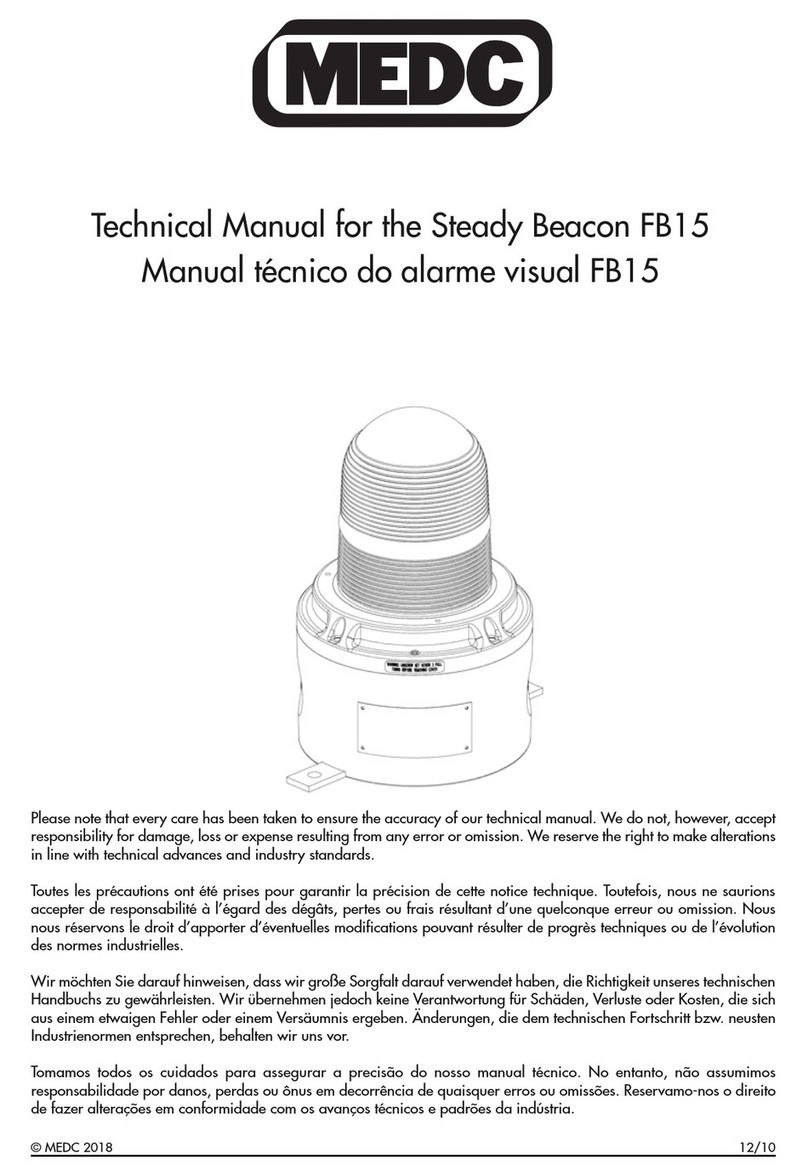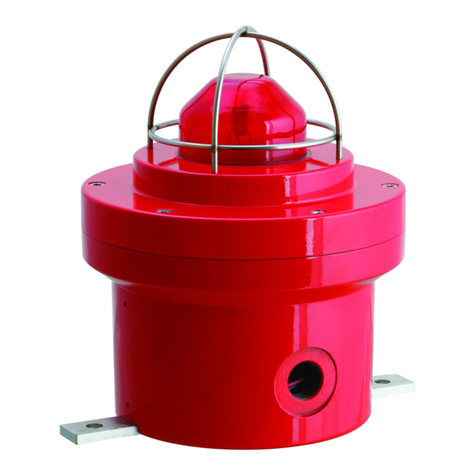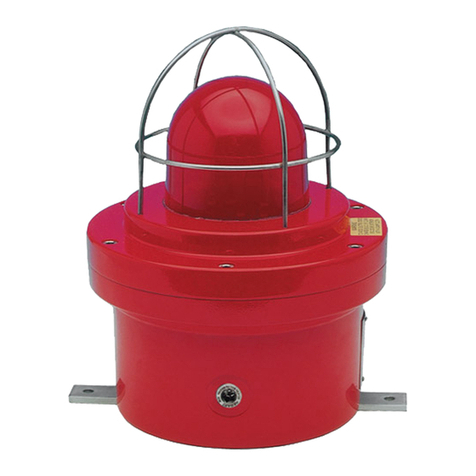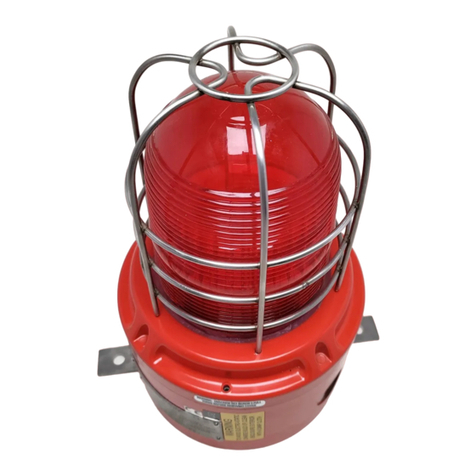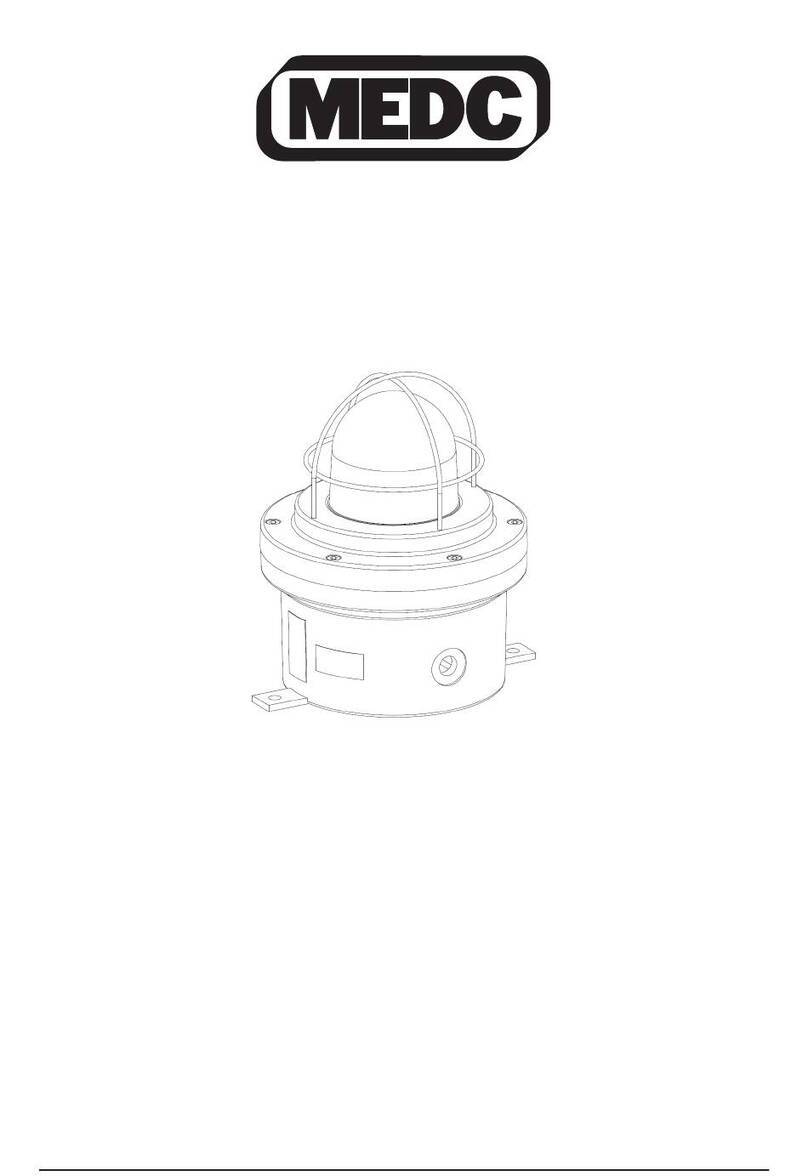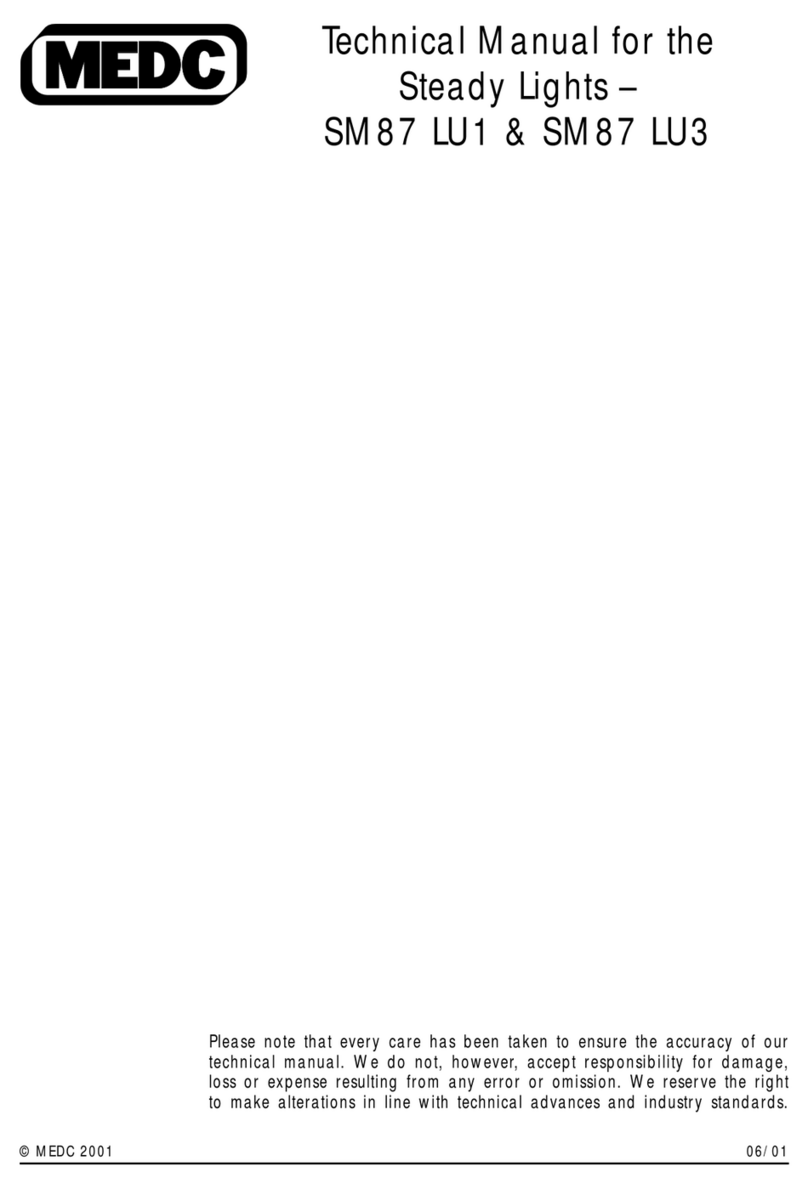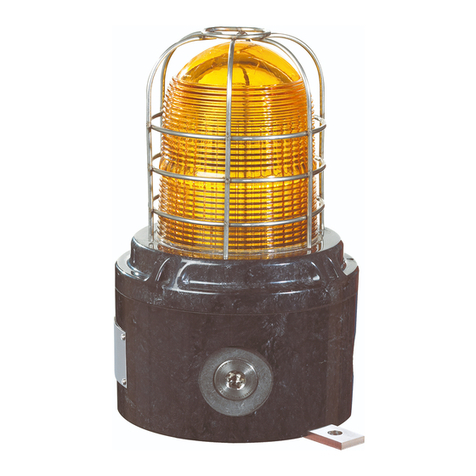
1.0 INTRODUCTION
These certified strobes have been designed for use in potentially explosive atmospheres and harsh environmental conditions.
The enclosures are suitable for use offshore or onshore, where light weight combined with corrosion resistance is required.
The housing is manufactured completely from a U.V. stable, glass reinforced polyester. Stainless steel screws and mounting
bracket are incorporated ensuring a totally corrosion free product.
Units can be painted to customer specification and supplied with identification labels.
2.0 GENERAL SAFETY MESSAGES AND WARNINGS
All instructions and safety messages in this manual must be followed to allow safe installation of the device. The device must
only be installed and maintained by correctly trained site personnel/installers.
i. To reduce the risk of ignition of hazardous atmospheres and shock, do not apply power to the device until
installation has been completed and the device is fully sealed and secured.
ii. To reduce the risk of ignition of hazardous atmospheres and shock, keep device tightly closed when the circuit is
energised.
iii. Before removing the cover for installation or maintenance, ensure that the power to the device is isolated.
iv. Following installation, test the device to ensure correct operation.
v. Following installation ensure a copy of this manual is made available to all operating personnel
vi. When installing the device, requirements for selection, installation and operation should be referred to e.g. IEE
Wiring Regulations and the ‘National Electrical Code’ in North America. Additional national and/or local
requirements may also apply.
vii. Cable termination should be in accordance with specification applying to the required application. MEDC
recommends that all cables and cores should be correctly identified. Please refer to the wiring diagram in this
manual (or separate diagram provided with the unit).
viii. Ensure that only the correct listed or certified cable glands are used and that the assembly is shrouded and
correctly earthed.
ix. Ensure that only the correct listed or certified stopping plugs are used to blank off unused gland entry points and
that the NEMA/IP rating of the unit is maintained.
x. MEDC recommend the use of a sealing compound such as HYLOMAR PL32 on the threads of all glands and
stopping plugs in order to maintain the IP rating of the unit.
xi. The internal earth terminal, where fitted, must be used for the equipment grounding and the external terminal, if
available, is for a supplementary bonding connection where local codes or authorities permit or require such a
connection.
xii. When installing the device, MEDC recommends the use of stainless steel fasteners. Ensure that all nuts, bolts and
fixings are secure.
xiii. To reduce the risk of ignition of hazardous atmospheres, conduit runs must have an appropriate UL or IECEx
certified sealing fitting connected at the conduit opening of the enclosure.
© MEDC 2018 01/18
xiv. AC units are not intended to be powered directly from a Notification Appliance Circuit.
3.0 INSTALLATION
Direct mount version
The device can either be directly mounted using the inserts moulded into the back of the enclosure (standard), or an optional
backstrap can be fixed to the base of the device thus giving an optional mounting position for when direct mounting is
deemed unsuitable.
The 2 off inserts in the base of the enclosure are designed to accept an M5 screw or bolt.
NOTE: For direct mounting, observe the following formula to determine the required fixing screw length:
Length of screw = Thickness of mounting surface + 25/64” (10mm).
The 2 off Ø21/64” (Ø8.5mm) mounting holes in the optional backstrap have been designed to accept an 5/16” (M8)
screw or bolt.
Pole mount version
The unit can be mounted to a ½” or ¾” conduit and may be positioned in any orientation. To mount the unit, thread fully
onto conduit and secure with the set screw provided (2.5mm A/F hexagon key).






